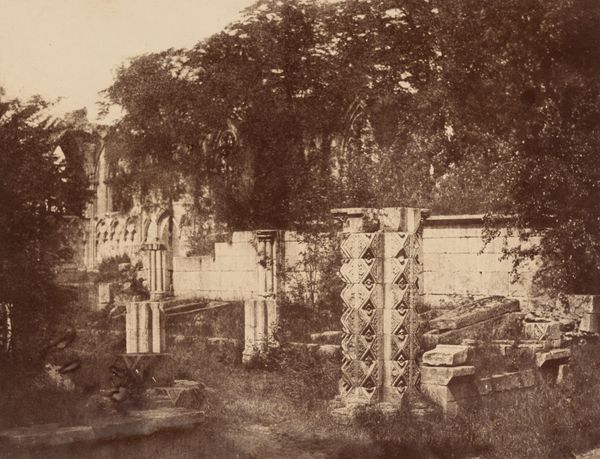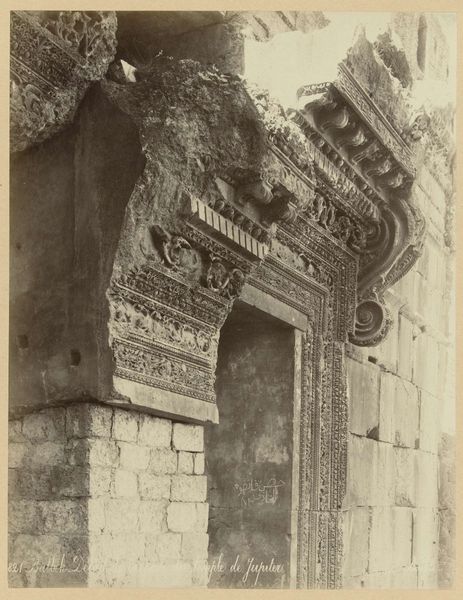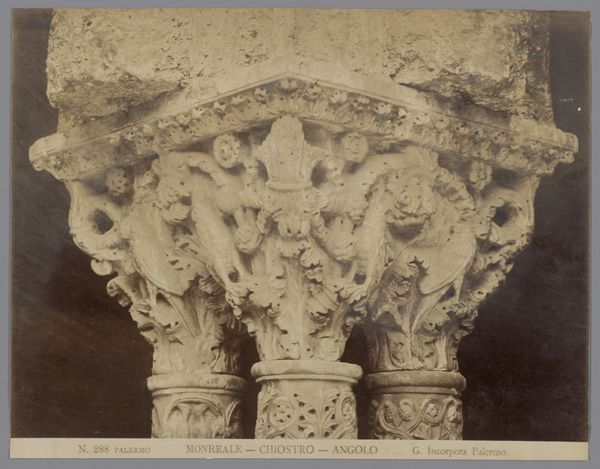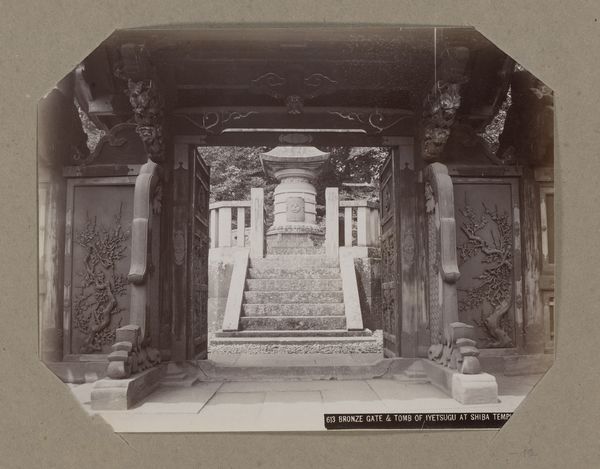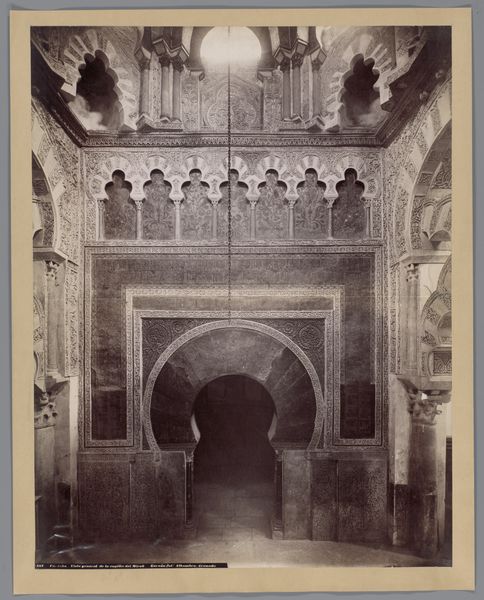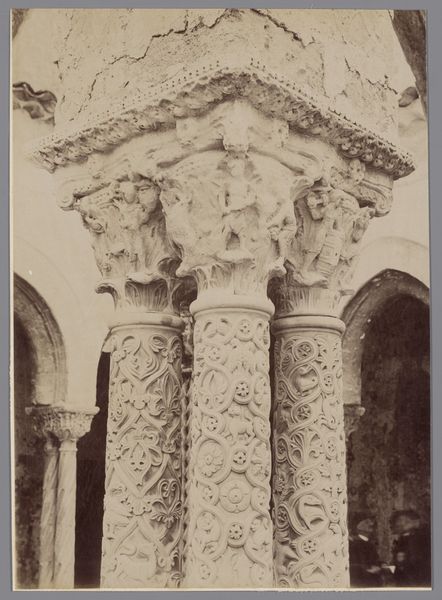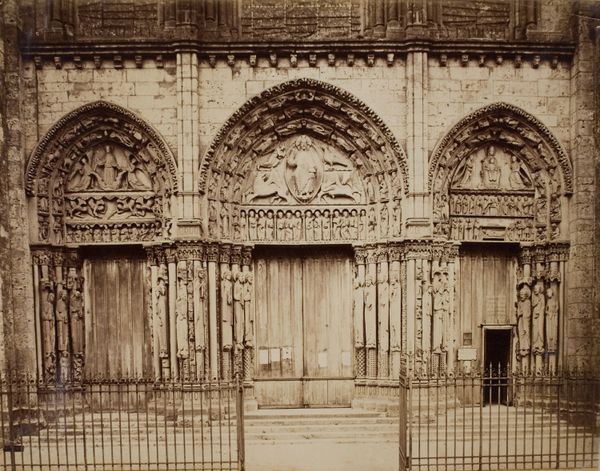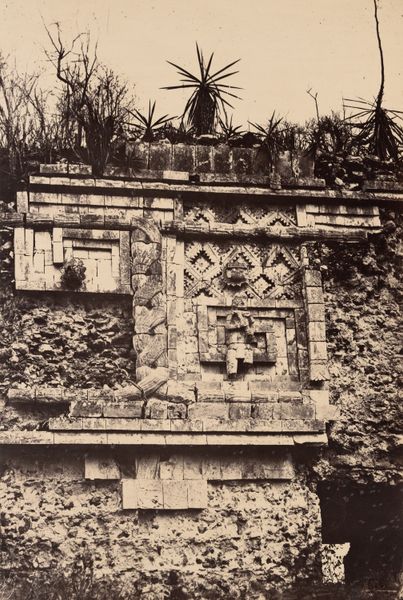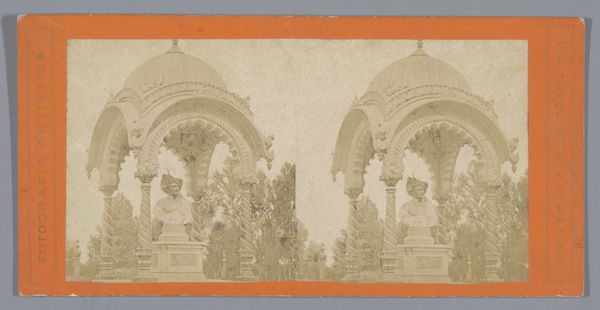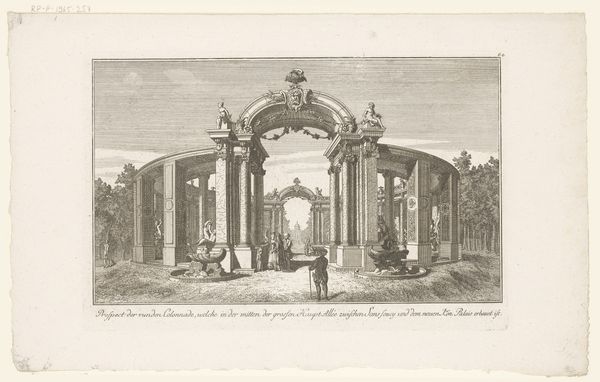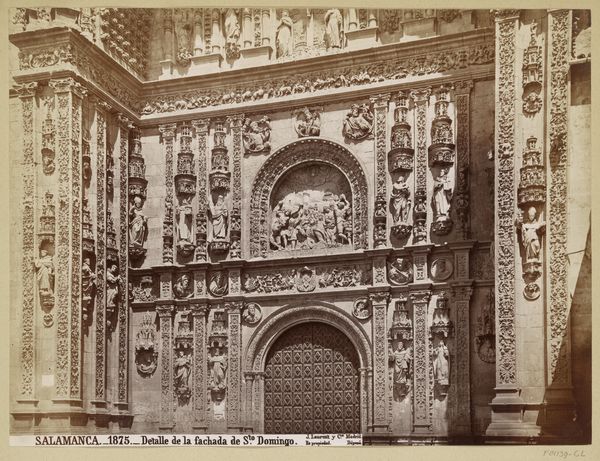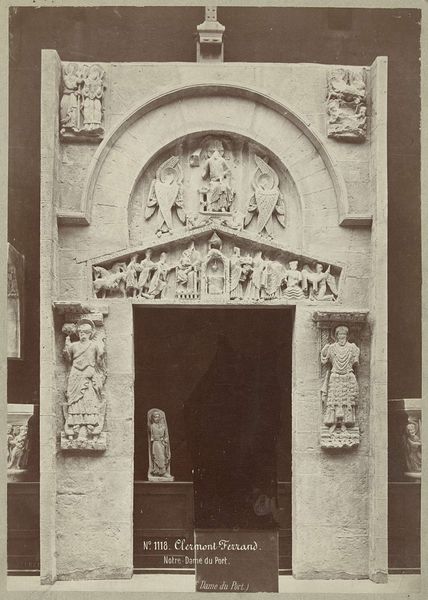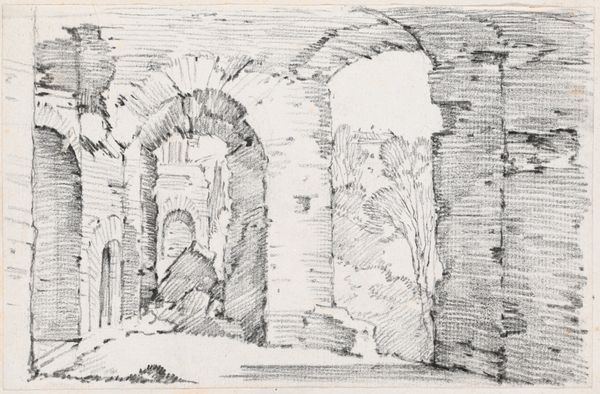
photography, architecture
#
landscape
#
photography
#
orientalism
#
19th century
#
architecture
Dimensions: image: 26.3 × 34.4 cm (10 3/8 × 13 9/16 in.) mount: 45.7 × 58.3 cm (18 × 22 15/16 in.)
Copyright: National Gallery of Art: CC0 1.0
Curator: Here we have a photograph titled "Tsagain Myo: Doorway of a Small Pagoda" by Linnaeus Tripe, taken in 1855. The print showcases a pagoda doorway, dense with architectural detailing. What strikes you first? Editor: The weight of time, I think. A stillness. This ornate entrance almost sinking back into the earth. There’s something both grand and incredibly humble about it, the way the light and shadow play…makes you wonder what lies just beyond. Curator: Considering the date, this image serves as important visual documentation. Tripe was commissioned to photograph sites of archaeological and architectural significance in India and Burma during British colonial rule. Think about the colonial gaze here. How did the means of production—photography at this time—impact the consumption and understanding of Burmese architecture back in England? Editor: Ah, "Orientalism" enters the chat. Yes, one could see the framing, the isolation of this doorway, as emphasizing the exotic "otherness". But the actual craft of photography—the slow exposure, the painstaking development of each print—that part interests me more. I imagine Tripe waiting, sweating in the heat, completely absorbed in getting the light right... Maybe some wonder seeped in too? Curator: Certainly, the labor involved and Tripe's presence on the ground, facing the subject, shouldn't be dismissed. The act of photographing inherently becomes part of the site’s story, another layer of materiality. The question is, how does the consumption of these images contribute to—or perhaps complicate—the narrative of colonial power? Editor: I like to imagine those viewing this image at that time. How the artistry and subject blurred in their mind. Each person no doubt colored their interpretation of this doorway differently with dreams of adventure and escape, some noble, some tainted with the politics of their era. Curator: The mass reproduction and distribution of images like these reinforced a visual hierarchy, dictating how Western audiences perceived, understood, and ultimately controlled narratives about the East through art and industry. Editor: In the end, the image holds both beauty and those troubling contextual layers. The doorway remains, doesn't it, regardless, as a reminder of time and what humans can build. And destroy, alas. Curator: Yes, its layered narrative underscores the complexities inherent in understanding historical objects and the means and motives for their making.
Comments
No comments
Be the first to comment and join the conversation on the ultimate creative platform.
